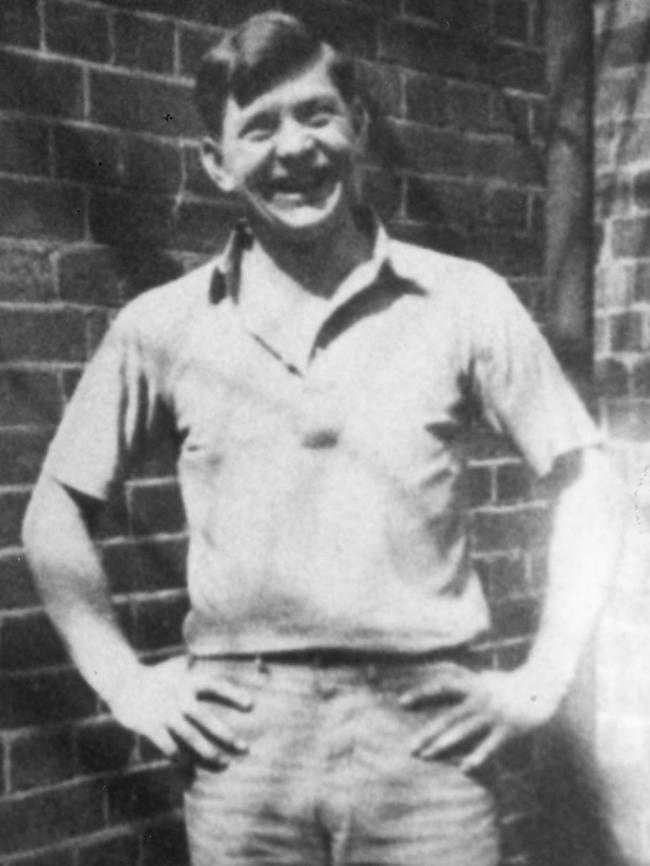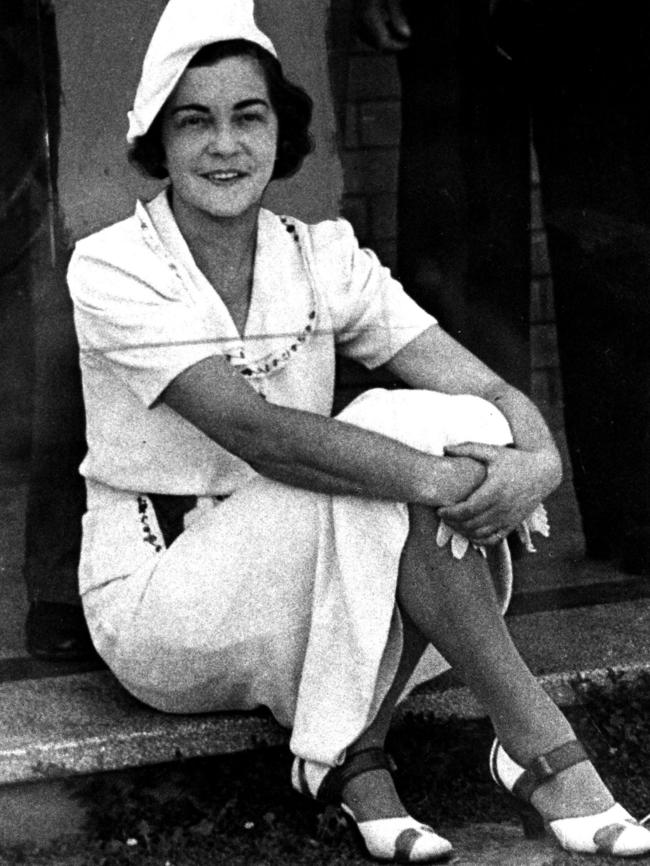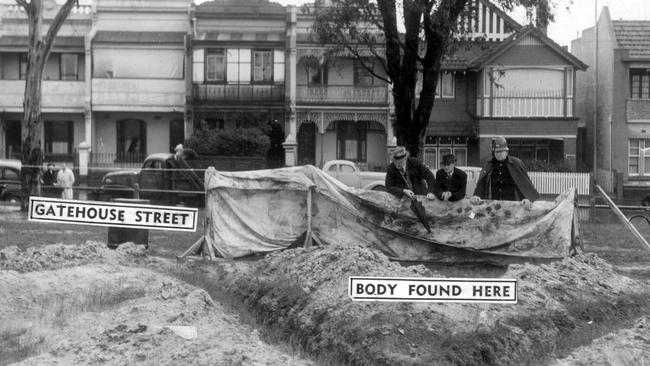Murder At Dusk: The smiling psychopath soldier who terrorised wartime Melbourne
TALES of The Brownout Strangler terrified citizens of Melbourne in the 1940s, as a soldier with a twisted fascination with female voices was terrorising women. This is the story of his last murder.

True Crime Scene
Don't miss out on the headlines from True Crime Scene. Followed categories will be added to My News.
TALES of The Brownout Strangler terrified citizens of Melbourne in the 1940s, as a soldier with a twisted fascination with female voices was terrorising women. This is the story of his last murder.
BOOK EXTRACT: EDDIE slept so deeply that he was unaware of anything after he stripped off his muddy clothes and fell back onto his bunk.
His was not the sleep of the just or the sleep of the weary; it was the sleep of the emotionally drained alcoholic psychopath who has murdered another woman.
Eddie had earlier thought that he had been genuine in his offer to go into town with the young milkman, Rupert, but as he sat on the edge of Rupert’s bed, the idea somehow didn’t seem
so attractive anymore.
He figured that Rupert would understand this, so he went downstairs and turned to the front door rather than back towards the kitchen. He let himself out quietly and turned left, heading north up Royal Parade.
He knew this area well now, with its wide streets and poky lanes, large mansions and cluttered guesthouses. He knew the lay of the land, where it rose and fell, where it was always dark and where it was sometimes light.
He sometimes felt as if he owned it, as if the people who passed through this little part of Parkville only did so because he allowed them to.
There were lots of young women here, drawn by the university and the city and, perhaps, by all the soldiers at Camp Pell.

It was sometimes hard to tell who they were and why they were here, but Eddie was confident in his own ability to recognise each and every one of them for what they were and what they wanted.
He wandered rather than walked, aware that a light rain was falling and aware, too, that he had drunk a lot of alcohol.
Strangely, that seemed to clarify some of his muddied thoughts.
He was a long way from his home and his mother and — deep down — there was a weight on his heart, a weight which he knew was telling him that he would probably never see either of them again.
It hurt in some ways, but in others it would not necessarily be a completely bad thing.
Had he not been engrossed in his own thoughts, Eddie would not have almost cannoned into the woman as she came out of the milk bar.
As it was, he narrowly missed her, and instantly stopped to apologise.
The woman was very small and petite and was wearing a black overcoat, carrying a black umbrella and trying to juggle a newspaper, a magazine and a handbag.
After apologising, Eddie asked if he could help, and held the umbrella as she folded the paper and magazine over and tucked them firmly under her arm.
They introduced themselves, both commenting on the other’s accent while explaining their own, and Gladys Hosking accepted Eddie Leonski’s offer to walk her home as they were both
heading in the same direction.
As they walked, they talked.
Eddie spoke of New York and the army, Gladys of Australia, Europe and the worlds of academia and entertainment.
Eddie loved her voice, her accent, and didn’t really even notice when another GI walked past them and said hello. And then they were outside Gladys’s boarding house in Park Street.


They stopped walking but continued talking for a couple of minutes. After a pause, Eddie apologised again, said he was a bit disoriented and asked Gladys to point out the best way back to Camp Pell.
I’ll go one better, she said, and take you there. It’s not that far, I’ve got an umbrella, so neither of us needs to get too wet.
They crossed Park Street, went back up to Gatehouse Street, and began walking down it. As they were walking opposite a line of parked army trucks, Gladys said that the camp was a
short distance beyond them.
They crossed the street, passed between two trucks and stopped on the grass verge.
Gladys thanked Eddie for his earlier help, wished him well, and turned to leave.
That was when he struck, both hands shooting out, grabbing her throat and squeezing with the strength that only real rage can give.
Gladys tried to struggle, but there was no hope in the uneven contest and within seconds she had collapsed.
Eddie held her upright for a while, then simply let her go and watched her body drop to the ground.
Again, he was surprised by the ease and simplicity of it all.
He thought it might be their voices that gave them away. Bitches and s--ts. What kind of woman wandered around in the dark with an American soldier? Especially as half the world seemed to know that there was an American soldier out there murdering women like this one.
She got what she deserved and he felt good.

He had some more work to do now, and didn’t need all the trash she was carrying as it would just get in the way. He tossed it aside.
Grabbing Gladys’s body by the upper arms, he dragged her backwards to the low fence which he climbed over before dragging her underneath.
He then applied a kind of inverted fireman’s lift, putting his arms under her shoulders and across her chest, joining his hands and carrying her backwards until he could go no further because he had tripped over a mound of dirt and clay. It was a metre or so high and had a slope he thought he may be able to utilise.
As he sat there, thinking, the dead woman started to gurgle. He simply pulled some of her clothes up over her mouth and nose and forced them down until she was both silent and still.
He thought he would have a bit more work to do on this one, so he started immediately.
He remembered slipping over a couple more times, and then it was done. Afterwards, he
remembered speaking to an Australian with a torch, a soldier who seemed to accept his story, as did that prick Jasinski when he bumped into him in the latrines.
But mostly he just wanted to sleep. It had been a big day, and he didn’t know how many more of those he had in him.

BROWNOUT STRANGLER STRIKES AGAIN
Sid McGuffie knew that the telephone call would come, but he wasn’t certain when it would be.
As it turned out, it was just after 7.30am on Tuesday morning; if nothing else, the timing
showed that the Brownout Strangler did not only stalk and kill at weekends.
The phone call to McGuffie was from the Royal Park police station, and it reported the discovery of a body in Gatehouse Street, Royal Park, just on the border of Camp Pell.
The body was that of a female; she seemed to be naked and she appeared to have been murdered.
•
They had known who she was almost from the time the butcher Whiteway spotted her lying in the yellow mud.

Whoever had murdered her had made no real effort to interfere with her handbag which contained her purse and a number of identity documents.
She was Gladys Lillian Hosking; she had lived a short distance away at a boarding house, ‘Marembe’, in Park Street and worked a little further away at the university.
She had no known family in Melbourne.
During the afternoon, Gladys’s body was formally identified by another boarder from 140 Park Street, a retired grazier named John Gray; he had known her since she moved into the boarding house five years earlier.
•
Sid McGuffie felt that they were close, very close, and couldn’t quite shake the feeling that the man they were chasing was just over the hill or around the corner, watching and waiting. This time though, that man was worried — or should be worried — because of the mistakes that he was beginning to make.
- This is an edited extract from Murder at Dusk: How US soldier and smiling psychopath Eddie Leonski terrorised wartime Melbourne by Ian W. Shaw. Published by Hachette Australia. RRP $32.99. Available in-store and online.


